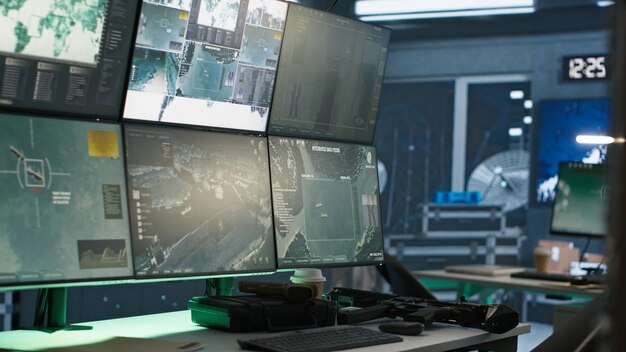
Sponsored article
In today’s rapidly evolving security landscape, staying ahead of potential threats requires innovative solutions. Advanced dual-sensing surveillance technologies represent a significant leap forward, combining cutting-edge sensors with intelligent systems to provide unparalleled security coverage. These sophisticated setups detect and analyze threats with extreme precision, ensuring a robust response to emerging security challenges. Unlock the potential of these surveillance advancements and elevate your security strategy.
The evolution of surveillance technology has seen remarkable progress, transforming from rudimentary monitoring methods to the sophisticated security systems we utilize today. Initially, surveillance relied heavily on basic visual observation techniques, often limited by environmental factors and technological constraints. However, with the advent of technological advancements, particularly in the latter half of the 20th century, surveillance systems began to incorporate electronic and digital components, enhancing their effectiveness and reliability. In recent years, the focus has shifted towards dual-sensing systems, which combine various sensory technologies to offer comprehensive monitoring solutions. This paradigm shift represents a crucial leap in ensuring security in ever-changing environments. Modern surveillance systems, like high-quality EOIR drone cameras, offer several advantages:
These capabilities provide unprecedented security coverage, making advanced dual-sensing systems indispensable in modern security operations.
In an era where security concerns are paramount, the integration of advanced technologies such as dual-sensing in surveillance is proving to be a game-changer. The benefits of dual-sensing technology lie in its ability to enhance surveillance efficiency by leveraging both visual and thermal sensors. This dual-input method significantly increases accuracy in threat detection, allowing for more reliable identification of potential security breaches. Enhanced detection capabilities mean fewer false alarms and better resource allocation, as security teams can focus on genuine threats more effectively. Moreover, dual-sensing benefits include improved performance in varying weather and lighting conditions, ensuring robust security enhancement even in challenging environments. This holistic approach not only fortifies the defensive stance of an organization but also streamlines operations by reducing unnecessary interventions, ultimately contributing to a more efficient and responsive security system. By investing in dual-sensing technology, organizations are able to reinforce their security posture with precision and reliability, addressing contemporary challenges with modern solutions.
In the realm of security, integrating AI with dual-sensing systems represents a significant leap forward in safeguarding assets and environments. AI integration enhances dual-sensing systems by combining video and audio data streams, which offers a more comprehensive monitoring solution. This fusion allows smart surveillance technologies to employ advanced analytics, transforming raw data into actionable insights. By using AI, these systems process immense volumes of information in real time, identifying potential threats swiftly and accurately. Furthermore, AI enhances the ability of dual-sensing systems to adapt to different environments, learning from patterns to offer proactive security measures. The integration of AI not only augments the efficiency of dual-sensing systems but also revolutionizes surveillance by minimizing false alarms and reducing human oversight. In an age where security challenges are evolving, AI-driven dual-sensing surveillance becomes a pivotal tool in predicting and mitigating risks, thereby securing both people and property more effectively.